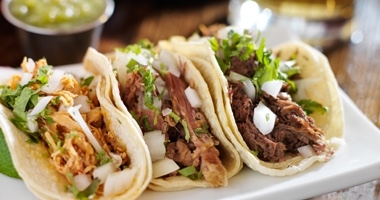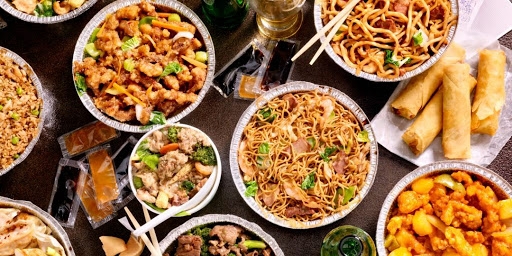Hello friends,
2020 is about to come to its rightful close. But before it does, many of us find ourselves in various “lockdown” situations. Some of us are just hunkering down because of our age and our health, or the age and health of those whom we could be caregivers.
Remember the date nights or family nights of just going to your favorite restaurant? I'm sure we all long for those days of a meal inside a restaurant.
Being a Master Food Preserver volunteer is not only assisting folks with safe researched preservation techniques, its about food safety as well. It's about techniques to be sure that what we serve our friends and families is done in the safest manner possible.
With that in mind, Covid-19 has influenced our dining habits. No more sitting IN a restaurant, sometimes no OUTSIDE dining, we are straddled with take-out.
There are two websites we recommend regarding food safety: Partnership for Food Safety and FoodSafety.gov. The following article comes from the Partnership website. Be safe. Be well.
TAKE-OUT SANITY
Busy, busy, busy. Multi-tasking Americans have a love affair with take-out foods, heat and eat entrees and other meal items they can pick up at a restaurant or grocery store on their way home.
Some foods are hot and some are cold when purchased. Sometimes you eat these foods right away, but other times you buy take-out foods in advance. Many of these perishable foods can cause illness if not handled safely on the trip home or in home preparation and reheating. Proper handling of these foods and any leftovers is essential to reduce your family's risk of foodborne illness.
Always start with clean hands – wash hands with warm water and soap for 20 seconds before and after handling food.
Keep it Hot — The 2-Hour Rule
- Never let hot prepared foods sit – in your car or on the counter – for more than two hours without refrigerating them.
- If you don't plan on eating the food immediately you have two choices: You can hold it hot in a preheated oven or preheated warming tray, at an internal temperature of 140 °F or above (use a thermometer to check the temperature); or you can put it in the refrigerator and plan to reheat it to a temperature of 165 °F just before serving
Chill it – Cold Food Know-How
- Cold foods should be kept at 40 °F or below.
- Refrigerate perishable foods as soon as possible, always within two hours after purchase or delivery. If you're someplace that's 90 °F or hotter (including in your car), make that one hour.
- When take-out or prepared food is purchased cold for an outdoor event—like a picnic, sporting event or outdoor buffet—a cooler well packed with ice or frozen gel packs is a practical alternative to a refrigerator. Keep the cooler in the shade. After food comes out of the cooler, remember the two-hour rule: Discard all perishable foods that have been left at outside temperatures longer than two hours; one hour in temperatures above 90°F.
- Reheat foods containing meat or poultry to an internal temperature of 165 °F. Always use a food thermometer.
- Reheat sauces, soups, and gravies to a boil.
- If reheating in the oven, set oven temperature no lower than 325 °F.
- Reheating in slow cookers and chafing dishes is NOT recommended because foods may stay in the “Danger Zone” (between 40 and 140 °F) too long.
- When reheating food in the microwave oven, cover and rotate food for even heating. Consult your microwave oven owner's manual for recommended times and power levels.
Think Before You Thaw
Many people are making home cooked meals to freeze for convenience, while others are freezing leftovers for later. Although the freezer inhibits bacterial growth, food can become contaminated both before and after freezing. Remember the basic food safety rules—clean, separate, cook and chill when preparing meals and handling leftovers.
- Thaw foods following these tips to reduce your risk of foodborne illness.
- Thaw the wrapped, cooked meat or poultry on a tray in the refrigerator. Allow about 24 hours for every 5 pounds. Small packages of cooked stuffing, gravy, potatoes, etc., will take less time to thaw.
- Once the cooked meat or poultry and side dishes thaw, plan to eat them within three to four days.
- Food should be heated to a safe internal temperature.
- Frozen food can be put directly into the oven without thawing, but will require a longer cooking time.
Ready-to-Eat vs. Not Ready-to-Eat
Use care when cooking up foods from the freezer, deli, or refrigerated sections of the grocery store. Not ready-to-eat products (NRTE) are identified as “raw” and require the consumer to cook thoroughly in order to be safe for consumption. Examples of these types of foods include frozen food entrees (pizzas, pot pies, TV dinners, etc.) and marinated, stuffed and/or breaded poultry, fish or meat. Foods that might appear to be fully prepared can still be classified as not ready-to-eat. Read and follow label instructions. Use a food thermometer to ensure food reaches a safe internal temperature.
Ready-to-eat foods include those foods that can be eaten straight from the packaging if held at the correct temperature. Ready-to-eat foods include cooked and prepared items from the deli, as well as canned meats. Be sure to hold ready-to-eat products at the correct temperature as some require refrigeration.
taken from:Partnership for Food Safety. https://www.fightbac.org/take-out-sanity/
